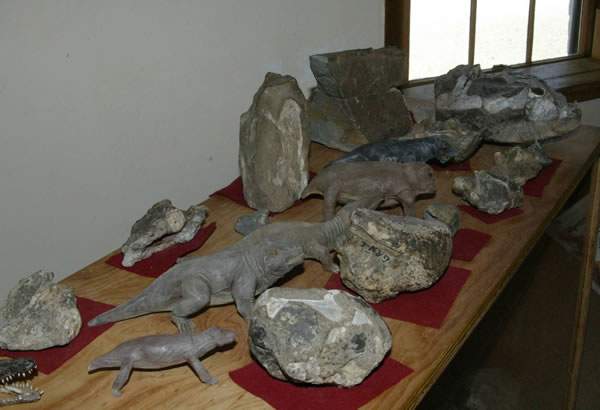Karoo life through the ages
Wednesday, 19th September 2012
Karoo farm museums
The various guest farms all over the Karoo are an exciting new form of country tourism – and their little museums are insights into the history and culture of those who lived on the land in the past. Some artefacts even go back more than 200-million years, when the Karoo was a different world.
If you take a stroll around Prior Grange Guest Farm in the southern Free State, you’ll come across a South African (Anglo-Boer) War blockhouse, Khoi petroglyphs in the veld and a farmstead museum full of interesting agricultural gear.
Like many guest farms in the Karoo, Prior Grange has a story to tell. The owners, Blackie and Sheryl de Swardt, have unearthed all sorts of objects on their property over the years. These objects speak volumes about the land, the conflicts of the past, the creativity of ancient people, and the way the farmers of old used to conduct business.
Karoo farm museums are not always immaculately archived – as, for instance, the Iziko Museums of Cape Town are. You’ll often find an old rusty tin that held bully beef (or ‘blow-up stew’ as the soldiers of the day mockingly called it) on display next to an ostrich shell or the skull of a mongoose – or perhaps something many millions of years older.
That’s the case out at Ganora Guest Farm, near Nieu Bethesda in the Karoo heartland. According to owners JP and Hester Steynberg: ‘In 1 day, we can give you a lifetime experience starting 240-million years ago.’
JP will take you into the veld on a ‘bone safari’ to show you where the fearsome-looking Gorgonopsian pre-dinosaur died as he or she lay moored in mud.
About 180-million years ago, the Karoo was not the semi-desert it is today. It was an inland basin of massive proportions, and it looked something like the lush Okavango Swamps of northern Botswana of today.
The Ganora farm museum contains San and Khoi artefacts and tools, an array o fossils, and the body parts of long-gone species.
But the main display of this museum is a complete fish fossil that tells you more about the nature of the ancient Karoo than almost anything else can. NamedKompasia delaharpi, it’s the only known complete fossil of the fish in existence.

Outside Somerset East is a heritage farm called Glen Avon. Its shearing shed was once the mess hall for British soldiers stationed at Middelburg in the Eastern Cape during the South African War (also known as the Anglo-Boer War), fought between 1899 and 1902. It was dismantled piece by piece and taken to this farm.
An incredible 7 generations of the Hart family have owned Glen Avon since its inception early in the 19th Century. Nowhere is there a greater sense of history than in the old mill, which once ground corn for the district. All its working parts are still stored there, including the gigantic spade-sized spanner used to tighten the great bolts on the miller’s wheel.
The next time you pass a guest farm in the Karoo, you might want to stop over and learn a thing or 2 about the deep history of South Africa...

